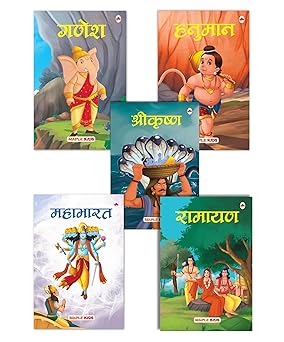भगवद गीता का अध्याय 13 - "क्षेत्र-क्षेत्रज्ञ विभाग योग" (Ksetra-Ksetrajna Vibhaga Yoga) हमें आत्मा और परमात्मा के संबंध के बारे में बताता है, जिसे भगवद गीता में "क्षेत्र" और "क्षेत्रज्ञ" के रूप में व्यक्त किया गया है। इस अध्याय में, श्रीकृष्ण हमें आत्मा के महत्व को समझाते हैं और कैसे हम अपने जीवन को ध्यान और ज्ञान के माध्यम से स्वयं को अध्यात्मिक दृष्टिकोण से समझ सकते हैं।
क्षेत्र और क्षेत्रज्ञ (The Field and the Knower of the Field):
-
इस अध्याय में, भगवान श्रीकृष्ण किसे "क्षेत्र" और "क्षेत्रज्ञ" कहते हैं यह वर्णन किया गया है। "क्षेत्र" का अर्थ है शरीर और इंद्रियों का संगठन, जबकि "क्षेत्रज्ञ" आत्मा या जीवात्मा है, जो शरीर को अनुभव करता है और उसे नियंत्रित करता है।
-
शरीर के रूप में क्षेत्र में अन्य तत्त्वों की भी चर्चा की जाती है, जैसे कि मन, बुद्धि, अहंकार, पंचमहाभूत, और प्रकृति।
आत्मा की महत्वपूर्ण बातें (The Significance of the Soul):
-
इस अध्याय में आत्मा की महत्वपूर्ण बातें बताई गई हैं। आत्मा को अन्य शरीरों में नियमित रूप से प्राप्त होता है, लेकिन वह अकर्मक, अक्षर, और अविनाशी होता है।
-
आत्मा को समझने के लिए ध्यान और ज्ञान की आवश्यकता होती है, और इससे हम अपने आत्मा की असली स्वरूप को पहचान सकते हैं।
आत्मा और परमात्मा का संबंध (The Relationship Between the Soul and the Supreme Soul):
-
इस अध्याय में, भगवान श्रीकृष्ण हमें बताते हैं कि आत्मा और परमात्मा का संबंध कैसे होता है। वे कहते हैं कि परमात्मा ही सब कुछ है और सभी आत्माओं का उपादानकारण है।
-
आत्मा का लक्ष्य परमात्मा के साथ एकता प्राप्त करना होता है, जिसके लिए ध्यान और ज्ञान का मार्ग अपनाना चाहिए।
अन्तिम शिक्षा (Conclusion):
भगवद गीता का अध्याय 13, "क्षेत्र-क्षेत्रज्ञ विभाग योग," हमें आत्मा और परमात्मा के संबंध के महत्व को समझाता है और यह बताता है कि कैसे हम अपने आत्मा को समझकर अपने जीवन को ध्यान और ज्ञान के माध्यम से आध्यात्मिक दृष्टिकोण से देख सकते हैं। यह अध्याय हमें आत्मा के महत्व को समझने के लिए मादर्ग्दर्शन प्रदान करता है और हमें परमात्मा के साथ एकता प्राप्त करने के लिए मार्गदर्शन प्रदान करता है।
Introduction to Ksetra-Ksetrajna Yoga
Overview of Chapter 13
Chapter 13 of the Bhagavad Gita explains the distinction between the physical body (Ksetra) and the soul (Ksetrajna) highlighting self-awareness and spiritual knowledge.
Significance of Knowledge
This chapter emphasizes understanding the relationship between the body the soul and the Supreme guiding spiritual realization.
Context in the Mahabharata
Krishna teaches Arjuna about the eternal soul the material body and the importance of wisdom and discernment in life.
Key Characters
Arjuna receives guidance from Krishna about recognizing the self beyond the physical body cultivating knowledge and detachment.
Objectives of Chapter 13
The chapter aims to develop spiritual awareness by understanding the distinction between material existence and the eternal soul.
Principles of Ksetra-Ksetrajna Yoga
Understanding the Field and the Knower
The body is the field (Ksetra) and the soul is the knower (Ksetrajna) recognizing this distinction leads to self-realization.
Importance of Knowledge
Spiritual knowledge helps individuals discern the eternal self from temporary material nature fostering detachment and inner peace.
Role of Meditation
Meditation on the distinction between the body and soul enhances self-awareness and spiritual insight.
Detachment and Discernment
Understanding the difference between the body and soul encourages detachment from material desires and ego.
Practical Application in Life
Applying these teachings nurtures mindfulness ethical conduct and a deeper connection with the eternal self.
Krishna’s Guidance
Teacher and Mentor
Krishna explains the distinction between Ksetra and Ksetrajna to Arjuna to foster wisdom self-awareness and spiritual growth.
Overcoming Ignorance
Recognizing the eternal soul removes ignorance and misconceptions about life death and material existence.
Path to Realization
Understanding the soul as the knower leads to spiritual realization and detachment from worldly attachments.
Combining Knowledge and Devotion
Knowledge of the field and knower complements devotion guiding one toward inner peace and liberation.
Application in Daily Life
Krishna encourages applying this understanding to daily actions fostering mindfulness compassion and ethical behavior.
Philosophical Insights
Concept of Ksetra and Ksetrajna
Ksetra represents the body and material world while Ksetrajna represents the eternal soul guiding self-realization and spiritual wisdom.
Interrelation of Knowledge and Devotion
Recognizing the soul fosters devotion ethical living and understanding of the Supreme’s presence within all beings.
Detachment and Equanimity
Awareness of the eternal soul cultivates detachment from material desires and balance in emotional and spiritual life.
Role of Meditation
Meditating on the body and soul distinction enhances clarity self-awareness and spiritual understanding.
Application in Daily Life
Implementing this wisdom encourages ethical behavior mindfulness and a spiritual approach to challenges.
Practical Teachings
Daily Reflection
Reflecting daily on the distinction between body and soul fosters spiritual growth humility and mindfulness.
Mindful Living
Chapter 13 encourages mindful living with awareness of the eternal soul in all actions.
Overcoming Ego and Pride
Recognizing the soul within reduces ego pride and attachment to material possessions.
Ethical Conduct and Devotion
Practicing ethical living devotion and mindfulness ensures harmony self-awareness and spiritual development.
Personal Growth and Liberation
Applying Chapter 13 teachings nurtures self-discipline spiritual awareness and progress toward liberation.
Conclusion and Key Insights
Summary of Ksetra-Ksetrajna Yoga
Chapter 13 emphasizes understanding the distinction between body and soul integrating knowledge and devotion and achieving spiritual growth.
Lessons for Modern Life
The teachings guide ethical living mindfulness and conscious spiritual practice in contemporary life.
Significance in Bhagavad Gita
Chapter 13 provides a framework for understanding the soul body and Supreme for spiritual realization.
Application for Personal Growth
Applying these teachings cultivates self-discipline awareness and spiritual maturity.
Inspiration for Life
Chapter 13 inspires mindfulness devotion and recognition of the Supreme in everyday life.
Chapter 13 of the Bhagavad Gita explains the distinction between the physical body (Ksetra) and the soul (Ksetrajna) highlighting self-awareness and spiritual knowledge.
This chapter emphasizes understanding the relationship between the body the soul and the Supreme guiding spiritual realization.
Krishna teaches Arjuna about the eternal soul the material body and the importance of wisdom and discernment in life.
Arjuna receives guidance from Krishna about recognizing the self beyond the physical body cultivating knowledge and detachment.
The chapter aims to develop spiritual awareness by understanding the distinction between material existence and the eternal soul.
The body is the field (Ksetra) and the soul is the knower (Ksetrajna) recognizing this distinction leads to self-realization.
Spiritual knowledge helps individuals discern the eternal self from temporary material nature fostering detachment and inner peace.
Meditation on the distinction between the body and soul enhances self-awareness and spiritual insight.
Understanding the difference between the body and soul encourages detachment from material desires and ego.
Applying these teachings nurtures mindfulness ethical conduct and a deeper connection with the eternal self.
Krishna explains the distinction between Ksetra and Ksetrajna to Arjuna to foster wisdom self-awareness and spiritual growth.
Recognizing the eternal soul removes ignorance and misconceptions about life death and material existence.
Understanding the soul as the knower leads to spiritual realization and detachment from worldly attachments.
Knowledge of the field and knower complements devotion guiding one toward inner peace and liberation.
Krishna encourages applying this understanding to daily actions fostering mindfulness compassion and ethical behavior.
Ksetra represents the body and material world while Ksetrajna represents the eternal soul guiding self-realization and spiritual wisdom.
Recognizing the soul fosters devotion ethical living and understanding of the Supreme’s presence within all beings.
Awareness of the eternal soul cultivates detachment from material desires and balance in emotional and spiritual life.
Meditating on the body and soul distinction enhances clarity self-awareness and spiritual understanding.
Implementing this wisdom encourages ethical behavior mindfulness and a spiritual approach to challenges.
Reflecting daily on the distinction between body and soul fosters spiritual growth humility and mindfulness.
Chapter 13 encourages mindful living with awareness of the eternal soul in all actions.
Recognizing the soul within reduces ego pride and attachment to material possessions.
Practicing ethical living devotion and mindfulness ensures harmony self-awareness and spiritual development.
Applying Chapter 13 teachings nurtures self-discipline spiritual awareness and progress toward liberation.
Chapter 13 emphasizes understanding the distinction between body and soul integrating knowledge and devotion and achieving spiritual growth.
The teachings guide ethical living mindfulness and conscious spiritual practice in contemporary life.
Chapter 13 provides a framework for understanding the soul body and Supreme for spiritual realization.
Applying these teachings cultivates self-discipline awareness and spiritual maturity.
Chapter 13 inspires mindfulness devotion and recognition of the Supreme in everyday life.

Shri Ram Charitmanas Gita Press Ramcharitmanas, Tulsidas Krit Ramcharitmanas, Code-81,(Hardcover, Hindi, Goswami Tulsidas)
Buy Now
एल्युमिनियम अगरबत्ती स्टैंड
Buy Now